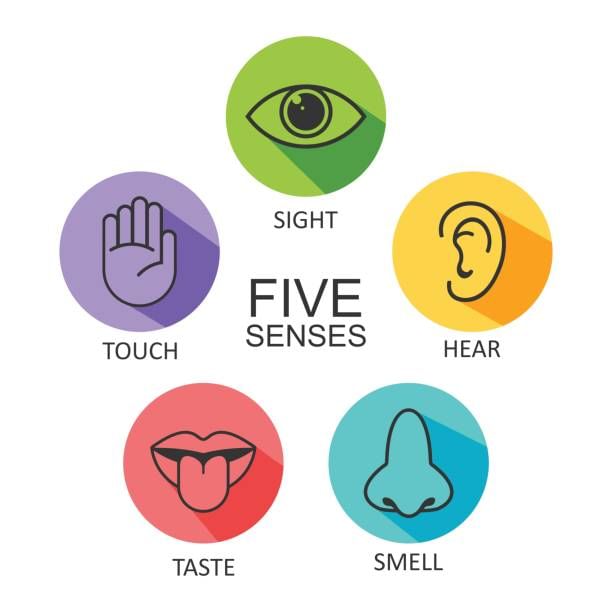Senses | General Knowledge for Young Learners - Class 1 PDF Download

Humans use their skin, eyes, nose, tongue, and ears to sense information in the world around them.
The senses help humans and other animals react to changes in their surroundings and inside their bodies. Animals receive sensory information all the time. They see a bug dart across a pond. They hear the roar of a lion. They smell a rose. They taste fresh bread. They touch a jagged piece of ice. They get dizzy from spinning in a circle.
The five basic senses are sight, hearing, smell, taste, and touch. The eyes sense sight. The ears sense sounds. The skin senses touch. On the tongue, taste receptors are found in structures called taste buds. They identify sweet, salty, sour, bitter, and meaty tastes. The nose detects smells. The receptors in the nose also help with the sense of taste.
In addition to the five basic senses, nearly all animals sense motion, heat, cold, pressure, pain, and balance. The sense of motion—knowing where the arms and legs are and where to move them—is called kinesthesis. The sense of balance, or equilibrium, is controlled by structures in the inner ear. These structures help keep the body in balance and prevent falls.
|
51 videos|98 docs|37 tests
|
|
51 videos|98 docs|37 tests
|



















